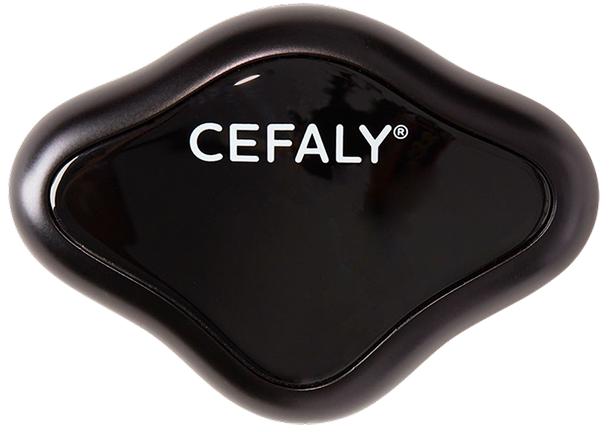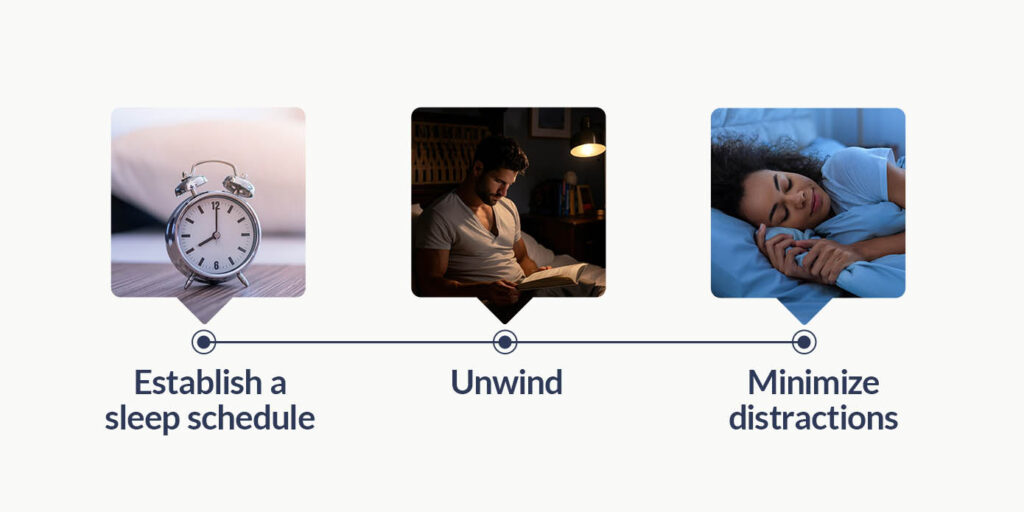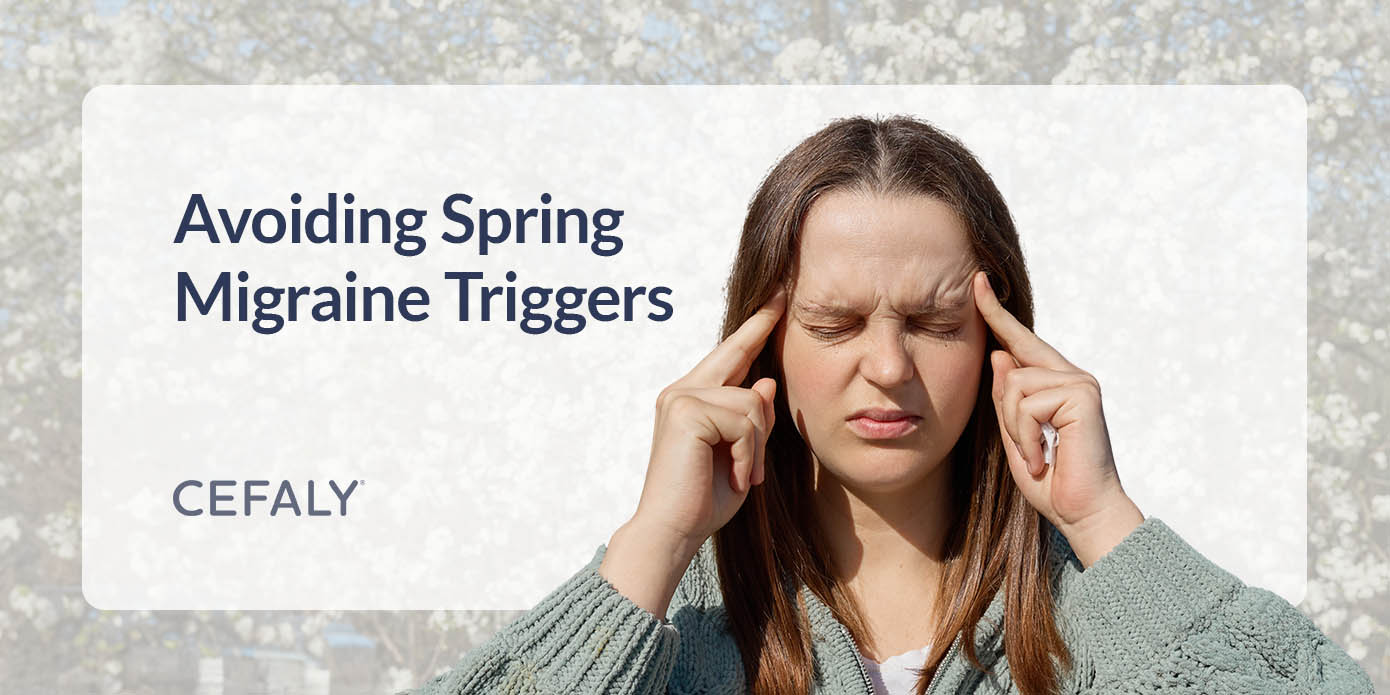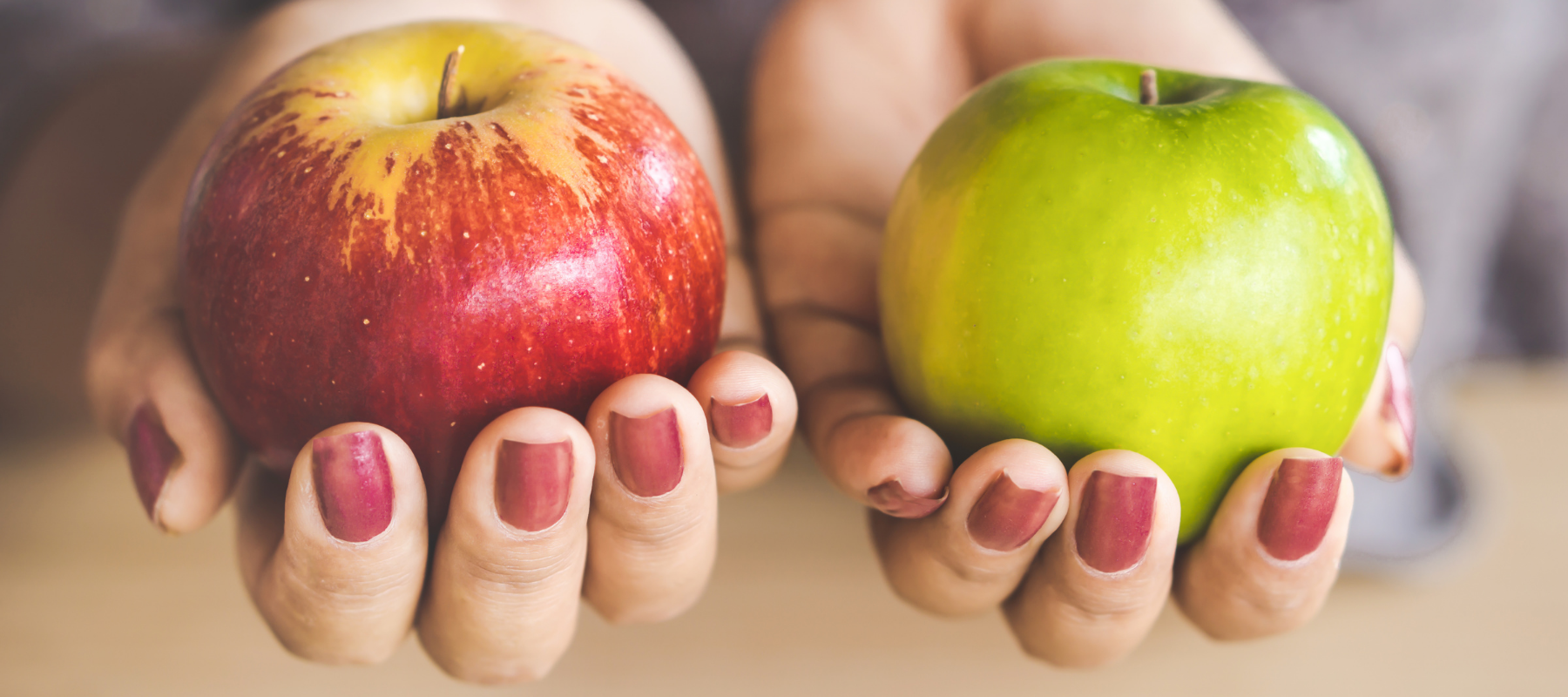Many of us are excited about spring. After all, the new season brings more sunshine, the promise of summer, longer days and blooming flowers. However, others find themselves battling migraine in the spring. Migraine affects more than 10% of the global population, and while some individuals experience it more than others, the effects remain all the same — uncomfortable.
So, why do people experience seasonal migraine in spring in the first place? Well, changes in weather, allergens and even shifts in daylight can trigger migraine. With that in mind, understanding and managing your migraine triggers during the spring season is incredibly important.
By learning how to navigate the springtime with migraine symptoms in mind, we can find some relief and enjoy the season to its fullest.
Spring migraine vs. springtime headache
To put it bluntly, a migraine is like a headache on steroids. A migraine is not your run-of-the-mill head pounder — it’s more like a full-blown neurological event. While migraine often includes headache, not every headache is a migraine. Headaches are like an umbrella term for any kind of head pain, whether it’s tension-related, sinus-induced or just a result of too much caffeine. But migraine headaches? They’re in a league of their own.
What sets migraine apart is its unique combination of symptoms and its tendency to stick around. Unlike your average springtime headache, a migraine headache may last for hours, days or even weeks. Such an experience may dampen your quality of life — and stop you from enjoying your spring.
3 common spring migraine triggers
Seasonal changes — particularly during spring — may impact migraine frequency and severity. But why? As we shift from winter to spring, there are many weather variables that play a role. These changes can trigger migraine in susceptible individuals, leading to the infamous spring migraine.
Let’s dig into some of the most common spring migraine triggers so you can be prepared.
1. Weather changes
For many who experience migraine, the unpredictable nature of spring weather can be more than a minor irritation. Temperature and barometric pressure changes are common factors related to these painful headaches.
Barometric pressure is basically the weight of the atmosphere around us. During spring, this pressure tends to fluctuate more than usual due to the changing weather patterns. When the barometer changes, it can produce imbalances in outside air pressure versus the pressure within our sinuses and ears. Now, for those susceptible to migraine, these shifts can mess with their head — quite literally.
It’s no secret that spring can be all over the place. The temperatures go from chilly to warm in the blink of an eye, which can be another migraine trigger. For example, when it gets hot and humid, our blood vessels might dilate. These fluctuations may cause blood flow changes and, thus, trigger migraine. On the flip side, sudden drops in temperature may lead to muscle tension in the neck and shoulders — another common migraine trigger.
Weather changes can potentially mess with our body’s equilibrium. It’s like our internal thermostat gets thrown off balance, and for those who experience migraine, that imbalance can spell trouble.
Quick tip: A reliable weather app can notify you of potential weather changes, helping you prepare ahead of time. Also, consider keeping a migraine journal to document your episodes and identify any patterns with weather changes.
2. Allergens
Spring brings more than just sunny days and blooming flowers — it also brings a surge of allergens like pollen and mold. For those with allergies, the drift of pollen through the air might signal the beginning of a migraine episode.
When exposed to pollen or mold, our body’s immune system kicks into overdrive and releases chemicals like histamine. These little troublemakers may cause inflammation and irritation in the nasal passages and sinuses, which may trigger migraine. It’s like a domino effect — sneezing, stuffy nose and bam! Migraine city.
Quick tip: You can invest in a high-efficiency particulate air filter (HEPA) to remove a large percentage of airborne particles. Otherwise, try keeping windows closed during high pollen days — a reliable pollen forecast app or site can notify you.
3. Light sensitivity
As we welcome longer, sunnier days, many people susceptible to migraine find that light sensitivity may trigger an episode. Light-sensitive people may find it challenging to cope with the increased exposure to sunlight and high glare.
When exposed to bright sunshine, our eyes respond by sending messages to our brains. In certain people, these signals might cause changes in brain activity. This can cause the onset of a migraine. It’s like a chain reaction. Bright light stimulates nerves in our eyes, which then send messages to our brains, causing abnormalities in normal brain function. So, even though it might seem like another sunny day, for some, it can be the start of a migraine episode.
Quick tip: Try wearing sunglasses designed to filter out UV rays or Avulux Migraine & Light Sensitivity Lenses, which filter up to 97% of blue, amber, and red light while allowing in over 70% of soothing green light. Similarly, you can wear a wide-brimmed hat to shield your eyes and face from direct sunlight. Otherwise, you can plan your outdoor activities during times when the sun is less intense, such as early mornings or late afternoons.
Get Drug-Free Migraine Relief With CEFALY
Shop Now
90-day money back guarantee
FDA-cleared
financing available
6 tips to prevent springtime migraine attacks
It’s impossible to avoid all potential migraine triggers, but you can take steps to raise your migraine threshold and reduce the chances of an attack. We’ll share some actionable migraine prevention tips.
1. Find a calm environment
Imagine the perfect spring scenario — sun shining, birds chirping, flowers blooming — but you’re stuck in the throes of a migraine attack. Not ideal, right? Luckily, there are a few things you can do:
- Turn off the lights: When you sense a migraine episode coming, find a calm environment. Go to your favorite serene spot, dim the lights and dial down the noise. A peaceful, dimmed environment might be what you need. Take a nap if you can.
- Temperature therapy: Reach for an ice pack or a warm compress and see what soothes your head best. Ice packs can provide a numbing effect, which may reduce pain. A warm compress might help to calm tight muscles. If that’s not your cup of tea, try taking a warm shower or bath to create a similar effect.
- Sip on caffeine: And speaking of a warm cup of something, don’t shy away from a cup of joe. In this scenario, a little goes a long way. In small doses, caffeine can help reduce migraine discomfort in its early stages. Caffeine may also help with the pain-relieving effects of acetaminophen (Tylenol and others) and aspirin.
2. Sleep well
Migraine can prevent you from falling asleep or wake you up at night. Similarly, a lack of sleep may trigger migraine. Here’s what you can do:
- Establish a sleep schedule: First things first, set yourself a regular sleep schedule. Aim for consistent wake-up times and bedtimes, even on weekends. Trust us, your body will thank you for it.
- Unwind: At the end of the day, try to unwind. Find what helps you relax, whether it’s soaking in a warm bath, listening to soothing tunes or diving into a good book. Unwinding before bed may help you sleep better.
- Minimize distractions: Ditch distractions like TVs or cellphones, which may keep your brain occupied. Instead, close your eyes, rest your head and breathe deeply.
Also, try to avoid intense activity, large meals, caffeine, nicotine and alcohol before sleep, as these may affect your sleep quality.

3. Eat wisely
There is a link between your diet and migraine episodes — especially when it comes to bad eating habits. To combat this, try out the following tips:
- Be consistent: To keep your body in sync, try munching on meals at the same time every day.
- Stay hydrated: Dehydration can trigger migraine, making it essential to stay hydrated by drinking water throughout the day.
- Don’t skip meals: Eat regularly, as fasting is one of the most common migraine triggers.
- Keep a food journal: Consider keeping a food journal to track what you eat and when those headaches strike — this could help pinpoint any potential triggers.
- Avoid migraine-triggering foods: You’ll want to avoid foods that may trigger migraine. Steer clear of foods like aged cheese, chocolate, too much caffeine and alcohol if they tend to set off your migraine.
Remember, what you put into your body can play a big role in how you feel, so choose wisely! We recommend speaking to a medical professional regarding your diet.
Learn How CEFALY Prevents & Relieves Migraine Pain
4. Exercise regularly
Exercise is an excellent way to help alleviate your migraine triggers and episodes. When you exercise, your body releases feel-good chemicals that can help block pain signals to your brain. Plus, these chemicals can help reduce anxiety and depression, two conditions that may worsen migraine.
And here’s another bonus. Maintaining a healthy weight through regular exercise may also lower your risk of chronic headaches. So, whether you’re into walking, swimming or cycling, find something you enjoy and get moving!
Just remember to ease into it gradually, especially if you’re prone to migraine triggered by intense activity. We recommend speaking to a medical professional regarding your exercise regime.
5. Manage stress
Managing stress may help prevent springtime migraine and improve your overall quality of life. Let’s talk about it:
- Simplify your life: Cutting out unnecessary stuff can really lighten the load and reduce stress levels. Don’t try to pack more activities or duties into your day. Instead, find a way to leave unfulfilling items out.
- Manage time wisely: Update your to-do list every day, both at work and at home. This means prioritizing tasks and breaking them down into manageable chunks.
- Take a break: Don’t forget to take breaks when you need them. If you’re feeling overwhelmed, a quick walk or some gentle stretches will help you regain energy for the task at hand.
- Adjust your attitude: Adjusting your attitude is key, too. Try to stay positive and tackle challenges with a can-do mindset.
- Enjoy yourself: Make sure to carve out time for activities you enjoy each day — even if it’s only 15 minutes. Whether you enjoy catching up with a friend or indulging in a hobby, do what gives you the most joy as a method to combat stress.
- Relax: Don’t underestimate the power of relaxation techniques like deep breathing to help you unwind and de-stress. Take 10 minutes to really focus on inhaling and exhaling — it may help relax your muscles.
6. Keep a migraine diary
Jotting down when your migraine hits, what you were doing beforehand, how long it lasted and what might have helped can give you some serious insights. A migraine diary may help you spot patterns and potential triggers so you can take proactive steps to avoid them in the future.
How CEFALY can help with migraine attacks in the Spring
Looking for additional tools to help you manage migraine? Fear not, because there’s a nifty little device out there that might just turn the tide in your favor — CEFALY Connected.
CEFALY Connected is an FDA-cleared wearable medical device that uses external trigeminal nerve stimulation (eTNS) to target the primary pathway for migraine pain. This gadget uses a technique called transcutaneous electrical nerve stimulation (TENS), although Cefaly is not a TENS unit. Don’t worry — it’s not as complicated as it sounds. Basically, CEFALY sends tiny electrical impulses through CEFALY electrodes on the forehead. These electrodes stimulate the nerves and help block pain signals before they reach the brain.
The best part? Using CEFALY is as easy. All you have to do is cleanse your skin, open and apply the electrode, connect your device and begin treatment. With two treatment modes to choose from, you’re in control of your migraine management. Need quick relief when an attack begins? Opt for the ACUTE program. Want to prevent future episodes? The PREVENT program has got you covered.
CEFALY is backed by years of research and development, with clinical trials showing impressive results. In one study, 79% of users experienced migraine pain relief after just one hour of ACUTE treatment. In another study, 38.1% saw a significant reduction in migraine days with regular use of the PREVENT program. Check out our clinical studies for details.
With CEFALY, there’s no need to fumble around with pills or worry about missing doses. Just pop it on whenever you feel a migraine coming on, and you’re good to go. It’s like having your own personal migraine-fighting superhero right on your forehead!
Give CEFALY a try today!
By reducing stress, prioritizing sleep, getting good exercise and following these other tips, you can take proactive actions to avoid springtime migraine. CEFALY’s FDA-cleared wearable medical device can provide you with drug-free migraine relief while reducing migraine frequency. Don’t let seasonal migraine keep you from enjoying life to the fullest. Explore CEFALY’s products, and learn how they can offer you the relief you deserve.
Get excited to get outside this spring. Feel free to explore our clinical studies and product reviews for more information!















